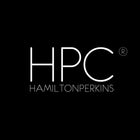The Power Of Hope And Resilience


Last week, I traveled to Haiti with the Clinton Foundation and J/P HRO to see parts of the country's growing artisanal, fashion, and agricultural sectors.
It was a trip that I'd been waiting a long time for, and throughout, I was struck by how different Haiti was from the impression you'd get by just reading, news headlines. The people of Haiti have been through a lot, and still face many challenges. But you almost forget all of that once you're there thanks to the resilience and determination of the Haitian people.
I met so many inspiring people and saw many really innovative businesses and opportunities that are helping the Haitian people lift themselves out of poverty - against some of the most beautiful landscapes I've ever seen. In this post, I'll be sharing some my most memorable moments from the trip and I hope you'll follow along.
Keep reading for my reflections from the trip.
How this trip came about
The trip was organized by the Clinton Foundation and J/P HRO, two organizations committed to helping to strengthen Haiti's future. The Clinton Foundation, for example, has been working to create sustainable economic growth in the energy, tourism, agriculture, environment, and artisans/manufacturing sectors. One way they do this is by connecting Haitian artisans to international markets. These connections are really helping to drive change and to open up real opportunities in Haiti.
We linked up with the Clinton Foundation via our existing supplier network in the country. When we first founded the company, we wanted the business to make a difference by supporting dignified income opportunities. We first started our work in Haiti when we partnered with Thread a couple years back and began producing travel bags made from recycled plastic source from Haiti. We've since moved the entire production of our bags to Haiti.
Overcoming adversity
When we first landed in Port-au-Prince, we had a warm reception in the airport. We arrived early and had some time to meet other designers in our delegation and members of the Clinton Foundation and J/P HRO team. We were briefed on our trip mission, goals and objectives while we waited for the rest of the group to arrive.
We stopped at a street vendor where we picked up some bread fruit (Lam Veritab) and made our way to the Musee du Pantheon National Haiten (The National Museum of Haiti). This briefing helped to set the tone for the rest of the trip and further our understanding of what the country has been through to get where it is today. We immediately learned about country's experience with slavery and the many leaders of the slave rebellion like Touissaint Loverture that defeated the French and created the first black republic.
The museum did an excellent job of preserving many of the weapons, flags, depictions, and other historic items that were a part of the rebellion and the founding of the country. I really admire just how much courage and bravery the people of Haiti have shown in the face of such adversity.
Hope and optimism for Haiti's future
After showering up and getting checked into our hotel, we took a short trip to a good friend of the Clinton Foundation and J/P HRO, Maryse Kedar, who graciously opened her home to host us for dinner. I felt fortunate to hear of her views on why she's optimistic about Haiti's future. She expressed a deep belief that her country is headed in the right direction. We touched on everything from GDP growth to the fact that more than 60% of parliamentarians are women, the theme of resilience permeated our conversation.
Takeaways
We visited so many different businesses and got to meet various talented artisans. The attention to detail in Haiti is on a different level. For example, the store signs are always hand painted adding a warm and inviting touch. One of the first things anyone recognizes when going to Haiti for the first time is the traffic. While it is chaotic at times, there is a certain ebb and flow to it all. By the end of the trip I was used to it and felt very aware of the transportation system and what to expect.
When we stopped in at Papillon, an enterprise that employs nearly 300 artisans, I took note of the jewelry being made from recycled cereal boxes. It just goes to show that there is a use for everything. We don't always think that there are uses for discarded items, but the artisanal sector continues to innovate and repurpose them into beautiful products.
Another thought that I was left with was that you don't have to know how to do everything to get started. So many companies in Haiti work with great partners like the Clinton Foundation and J/P HRO to find the missing pieces to be successful.

Impact
Unemployment in Haiti is a big challenge. So many jobs and people are making a difference for their families with the work that they do in Haiti. It helped me personally reflect on the mission of our business and how we can continue to empower people that are supporting us. Some things cannot be figured out all at once but good things are in the future for our work in Haiti.
Our last day in Haiti seemed to come so fast. We made about 14 scheduled stops in two days with a few detours in between. The country has so many facets of creativity even down to the trash in the streets. Coming from the United States, it is hard to picture trash being so plentiful and being turned into commerce. But around the Truttier Landfill, plastic has a value of about 4 gourdes per pound.
We met with Thread and Team Tassy who guided us as we traced the source of the plastic bottles collected all the way down to the collection process. Collectors work throughout the day and overnight to collect bottles to sell early the next morning, when the collection centers open. Higher quality plastics can fetch more cash for collectors. From there, we were briefed on the social and environmental impacts of the work.
Taking Action Now
We started Hamilton Perkins Collection with a strong set of core values and wanted to get this across in everything that we do. It is important to us to partner with suppliers and factories that bring expertise and operate using ethical practices. Now that we have seen the capabilities in Haiti, we look to continue to invest in the country. We had already been working with partners there for fabric and cut and sew operations, but the trip gave us a renewed appreciation for the work that is being done.
We have made new relationships that have fostered new collaborations and projects in Haiti. We also plan to work with additional service providers in the country. We found that there are more things we can do in the country that will add value and empower our customers. We also have already made introductions to other businesses based in the US that could benefit from the work that is happening in Haiti. We are planning the next trip at the time of this writing.
This is just the beginning. I truly believe that the people of Haiti are heading toward the bright and prosperous future that they deserve.


